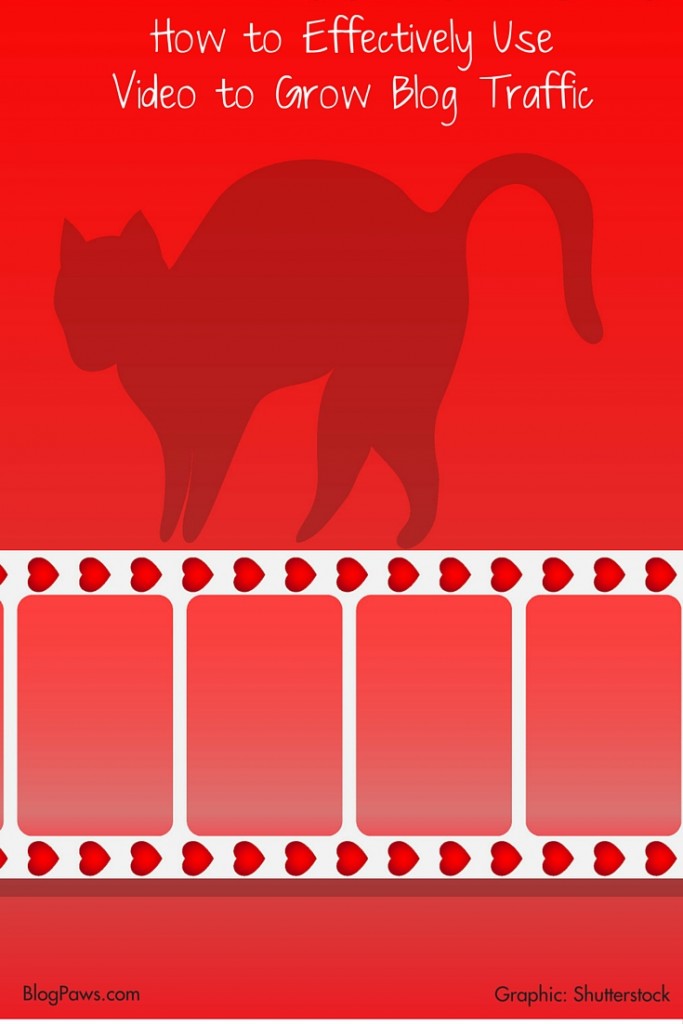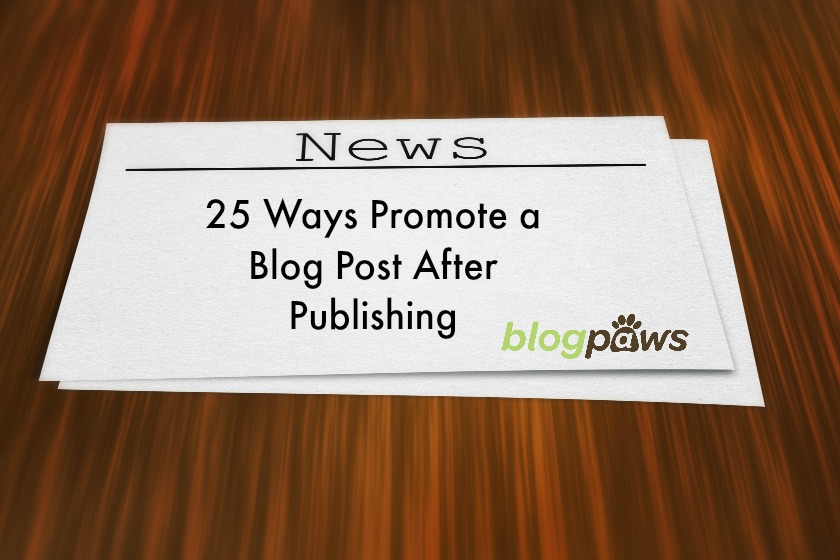How to Effectively Use Video to Grow Blog Traffic
Post by Carol Bryant, Marketing and Social Media Manager, BlogPaws
When the Washington Post speaks, people listen. According to the publication, within in 5 years, 80 percent of the whole Internet will be online video. Read that again: 80 percent. That’s a whole lotta’ visual, folks. In a post I penned recently, there are specific reasons bloggers should use video in blog posts. Knowing how to effectively use that video to grow blog traffic can be tricky though not impossible.
Let’s use a blog post about what to look for in a quality pet treat as an example. Here are some things you could do to effectively (note, you want the video plan to be effective) use video to grow your blog’s traffic:
Use Instagram – SnapChat – Vine
The beauty of Instagram and Vine is that you can embed the code directly into your blog post. My followers on Instagram would probably not respond to a photo on Instagram of stats or a photo of a treat. They would, however, respond to something like this:
And they did. I keep the video rolling on my phone when shooting pictures for blog posts. Some of the most highly trafficked end results happen when I least expect it, as is the case with my dog play “attacking” me for these treats.
I was able to embed the above video into the post the next day, so this equates to a win-win!
Facebook Native Video
Engaging with a Facebook page is cited as one of the relevancy factors in Facebook’s EdgeRank algorithm. We live in a highly visual society: Think of all the things you scroll through on a daily basis. Rumor has it that cursive writing is being phased out of the school system. It makes sense, then, to capture your audience where they reside: In their visual processing attention spans.
The key in using Facebook native video is in knowing what it means and who your audience is. If you are engaged in the 10K challenge in the BlogPaws Community, you know we are teaching you to grow your blog and to define what works and what does not.
Looking to improve your Facebook audience reach (who isn’t, right?), value is key. What are some of your readers’ most frequently asked questions? Are you following your blog’s analytics so that you know what you most popular posts are? Sometimes a video is a more effective way to communicate than a blog post, and you can film yourself answering questions on an iPhone or Android and then upload that to Facebook. Native Facebook means right to Facebook, thus bypassing any other video platforms like Vimeo or YouTube.
Side Note: Late in 2015, Facebook rolled out the Videos Tab. Though I have not personally experimented with it yet, one is able to house Facebook native video shares here. Think of it as your Facebook page’s own native video storage facility.
Why is this important? Viewers who are watching your native videos on Facebook will have other videos to watch without having to scroll through your news feed. Most people won’t take the time to scroll back through your feed, so make it easy for them to stick around and grab all your fantastic video content in one place.
Bonus tip: At the end of your short but meaningful video, mention where people can go to learn more and even use a slide to show your blog’s URL.
Have a Strategy in Place
You have a blog business plan, and there is a section dedicated to growing your social media channels within that blog business plan. What is your reason for wanting to have a video component? You must define what the goal is before you set out to achieve it.
It sounds like common sense, but many folks skip this much necessary step.
According to social media guru, Gary Vaynerchuk, Facebook is becoming television’s competitor. Take the time, put in the work, and produce the videos that will move your business in the right direction, he says.
What does a blog video strategy look like?
1 Don’t make it complicated.
Most of us glaze over something when it seems time consuming, right? Make this easy: Define the channels where you want to grow and then make it happen.
2 Determine what your video content will accomplish and who the target audience is.
- Are the videos going to be funny? Educational? Insightful? A combo of all of these? Your blog’s tone and audience should help you make this decision.
- Who is this content targeting? Know your reader and what they want: Google Analytics is your friend.
- What is the video takeaway? What is the goal of your videos? Do you want people clicking over to your blog? What do you plan to do to make that happen? What is the problem your video is solving for your audience? Sometimes laughter is the goal: And that’s a factor, too. Bottom line: What will your videos help your readers/audience do?
3 Plan Frequency, Topics, and Types of Videos.
Determine where you will post videos, when, and outline the types of videos you plan to do. For example:
- Webinars
- Q&A
- Product review
- Periscope and promotion of the live feed
- Crafters and how to’s
- Pet friendly travel spots
You have a blog mission statement, and this is when that mission statement will help you big time. If your blog, for example, is all about healthy cat living, then it makes sense to showcase videos that are educational and engaging involving real world cats: YOURS.
Side note: Brands love when bloggers use multimedia platforms to get their message across. Think about it: Their messaging lives across platforms using real pets engaging with and/or using their products. #swoon
4 Track Your Return on (Video ) Investment: ROI.
Just as you measure your Google Analytics and track Facebook measurements, so too will you want to track your video engagement.
A solid blog video strategy keeps you from tossing spaghetti at a wall and hoping some of it sticks. Your videos should have a purpose aligned with your blog’s goals.
5 Promote the Videos.
Hitting publish is an action, and there is no worse feeling for a blogger than to pour their heart, time, and talents into a blog post, publish it, and very little traffic comes its way. Promotion takes up more of my time than actually writing a post…and rightfully so.
There are hundreds of ways to promote a blog post after publishing. Here are 25 ways to promote a blog post to get you started.
The same holds true for video: Simply uploading a video means nothing if you aren’t trying to create some buzz around it.
Some quick tips for promoting video:
- Consider boosting it with a Facebook paid ad or paid boost;
- Embed videos into blog posts when possible for maximum exposure;
- Share your video in LinkedIn related groups if it answers Q&A’s to that audience;
- Share videos on the proper platforms: Consider Tumblr, Twitter, LinkedIn, StumbleUpon, SnapChat. You don’t need to, nor should you, be “everywhere.” Instead, be selective in where you share.
Bonus Tip: Use YouTube analytics to see which social media sites are sending you traffic. If your traffic is coming over to YouTube, for example, from Facebook, then it makes sense to post videos to Facebook.
I love this guy’s approach to video sharing. Why? Because he uses common sense. Analytics aside, you need to play to your audience and where they are located.
How are you using video to increase your blog’s traffic?
Image: Shutterstock: ARRAY








